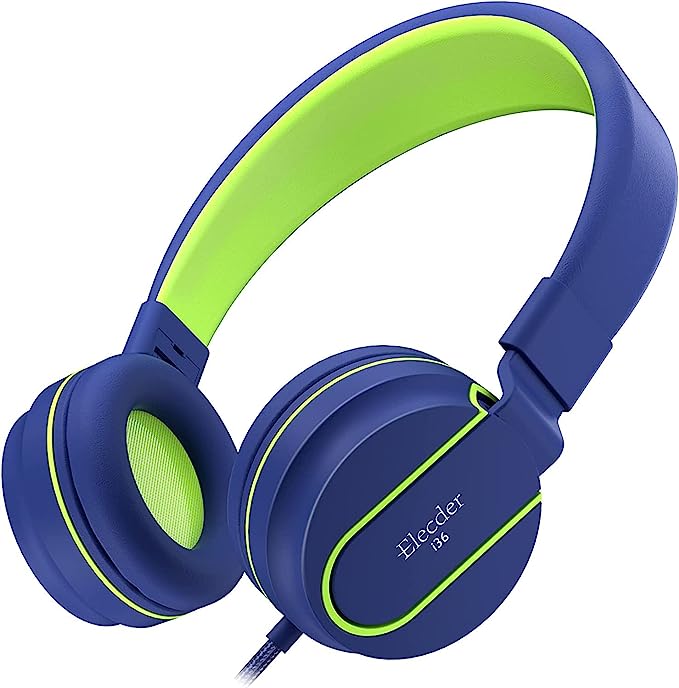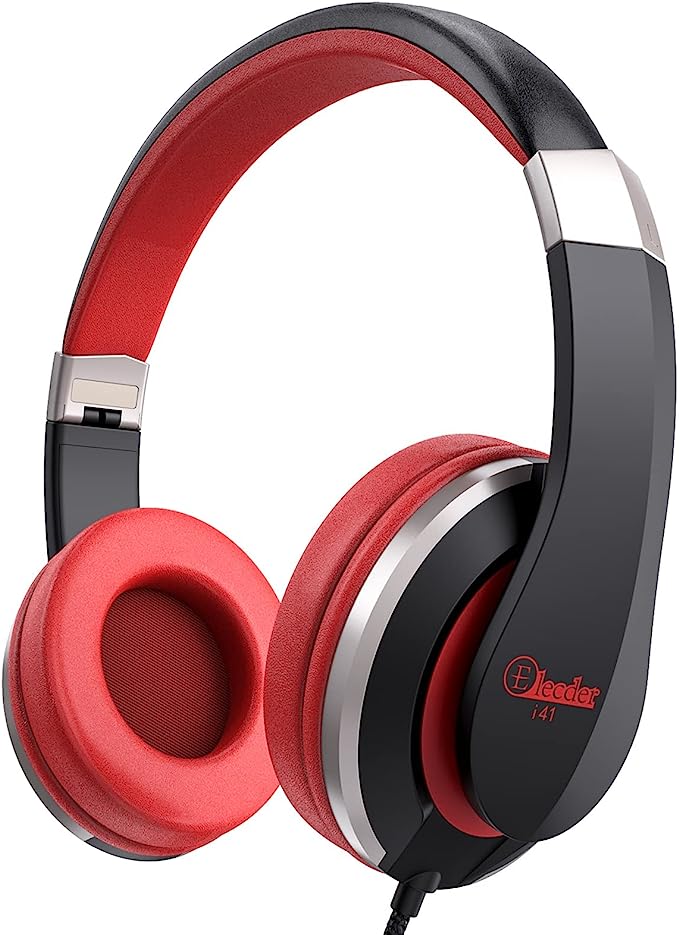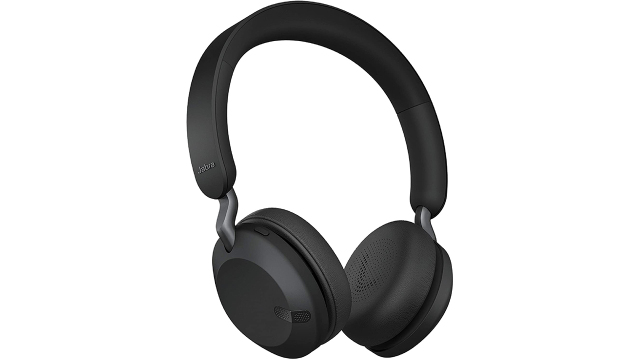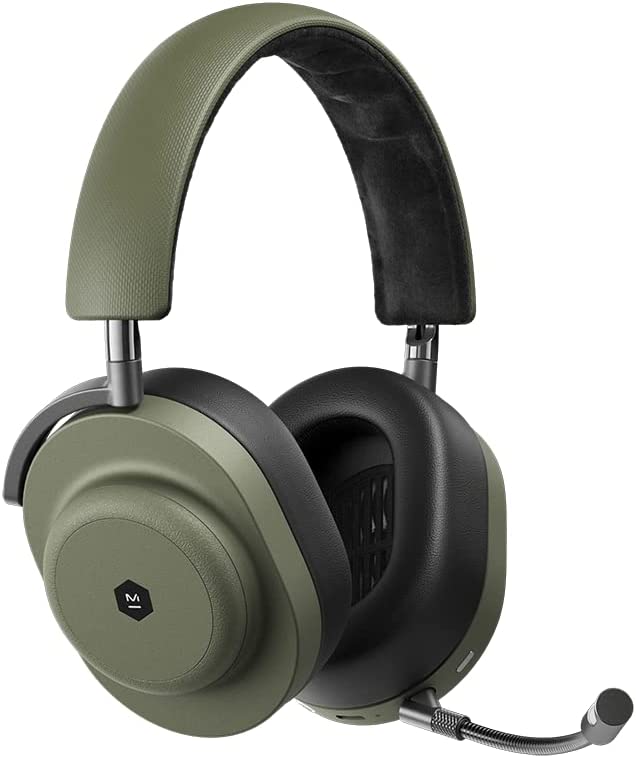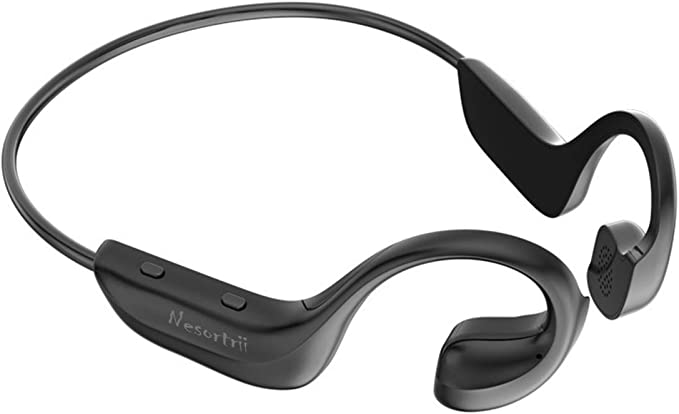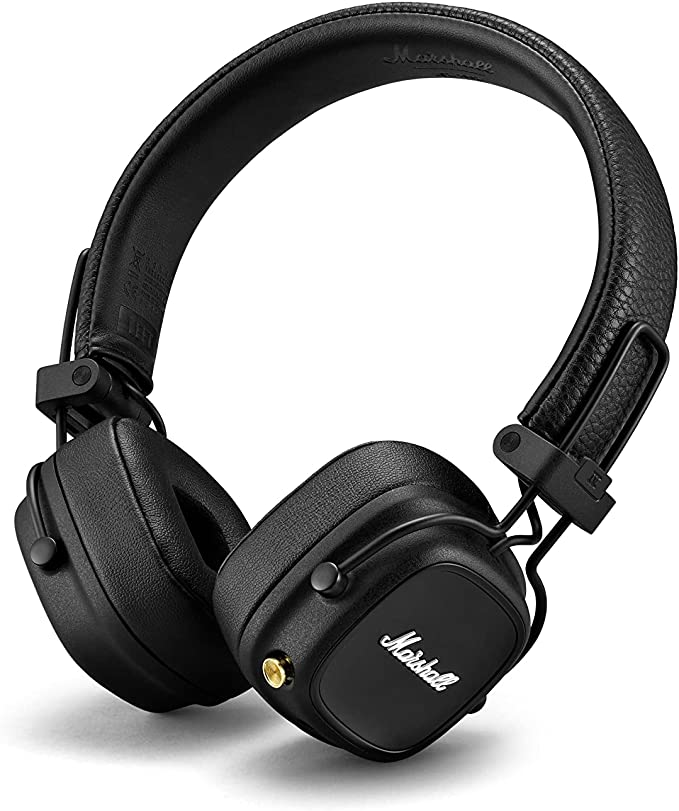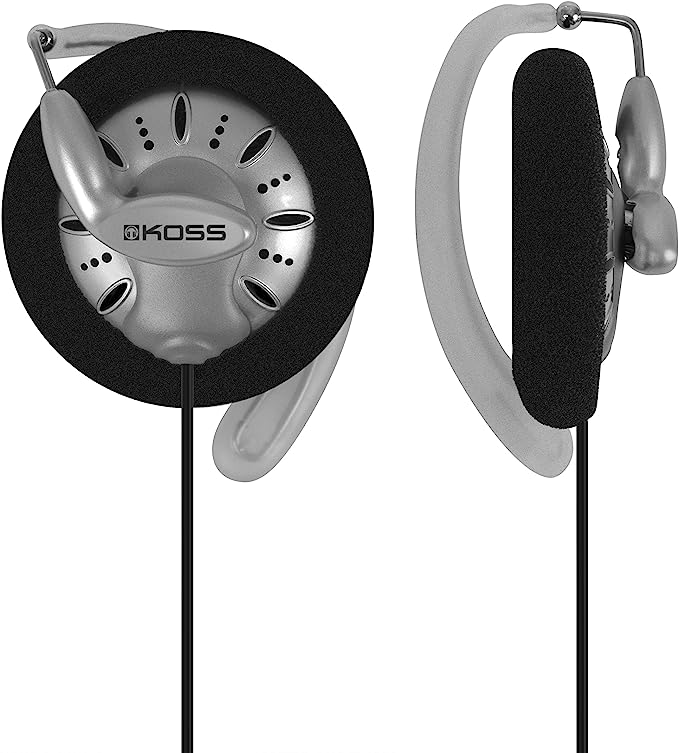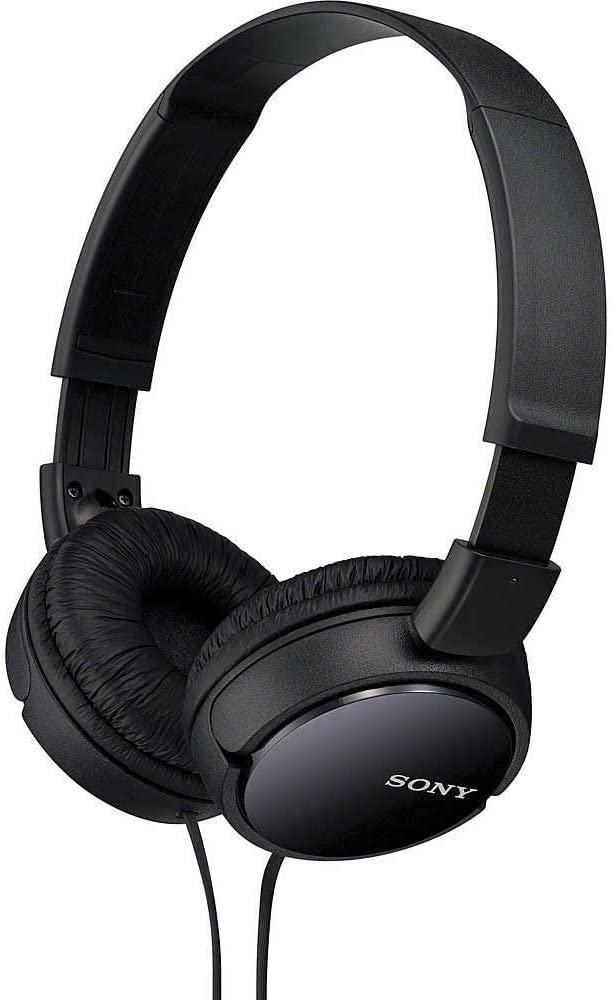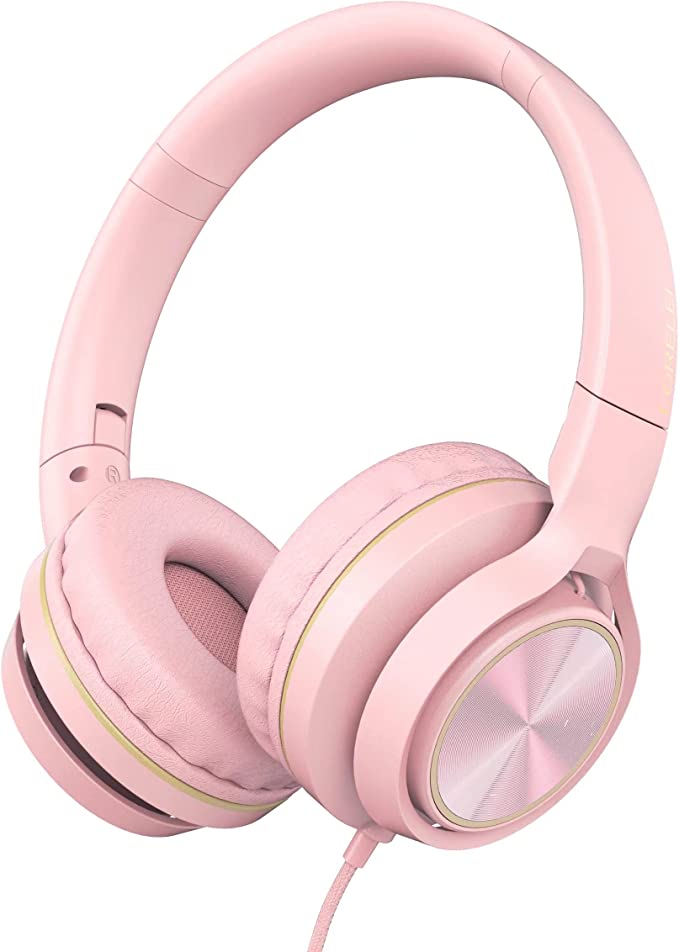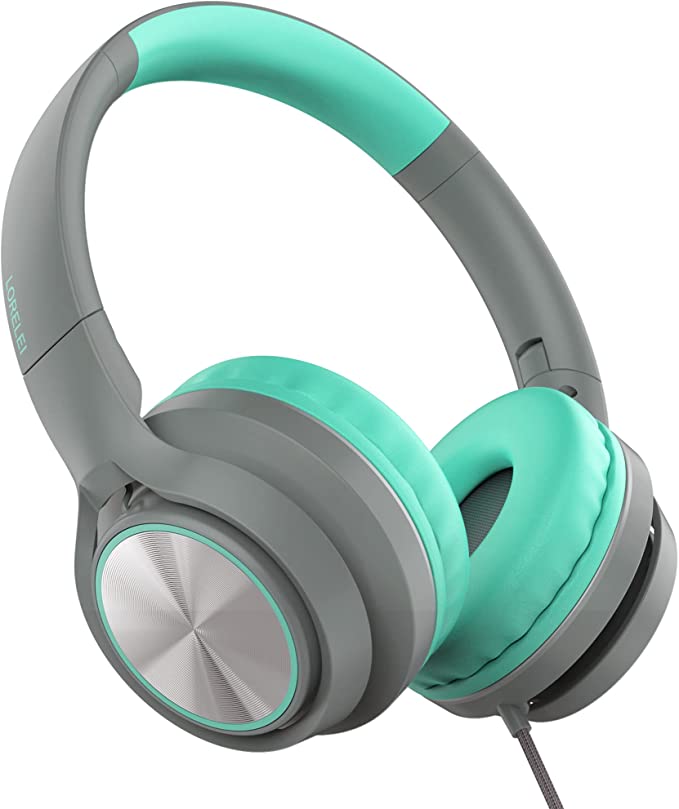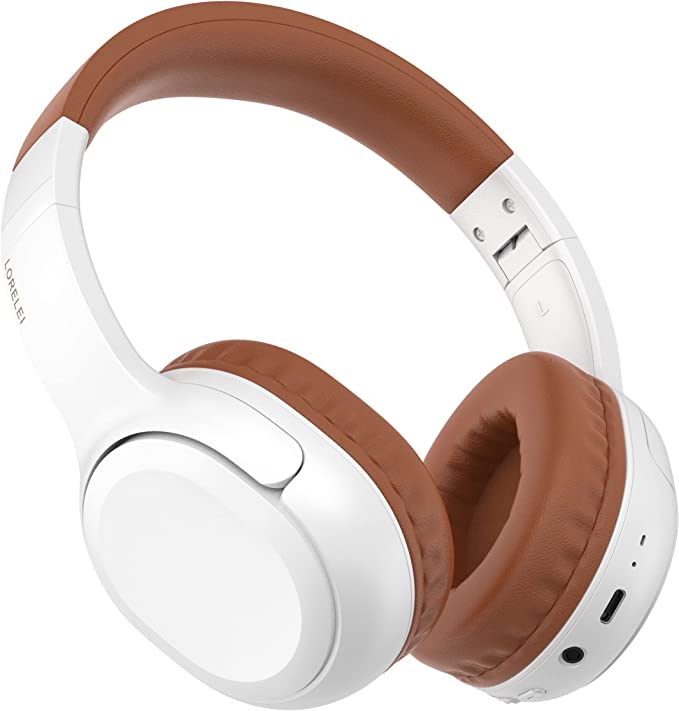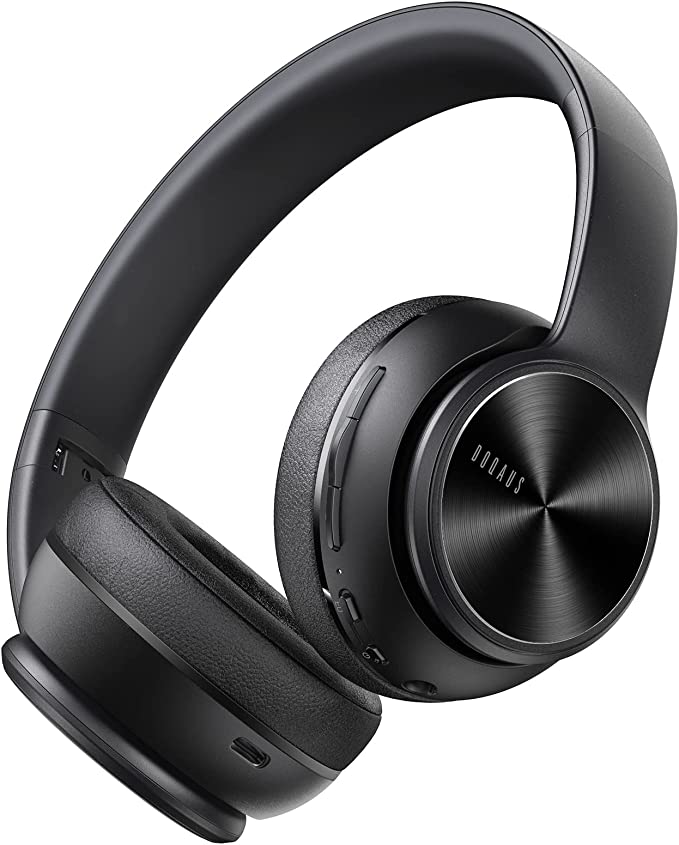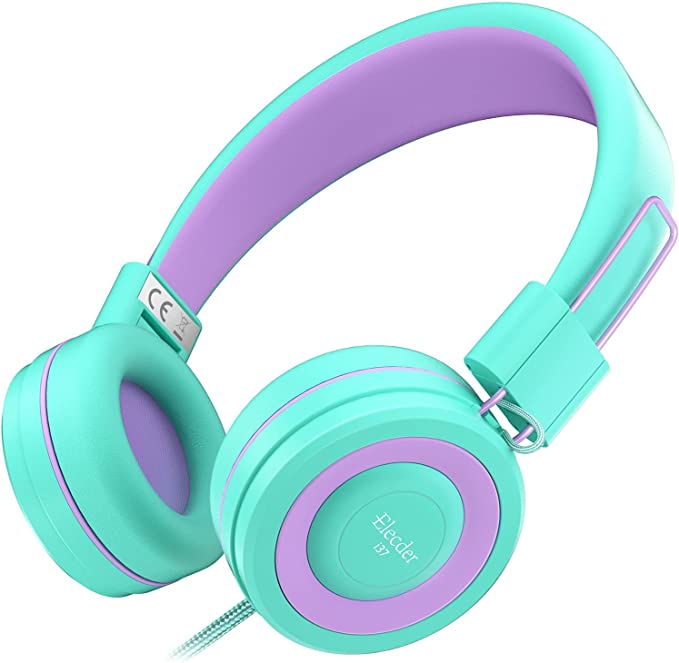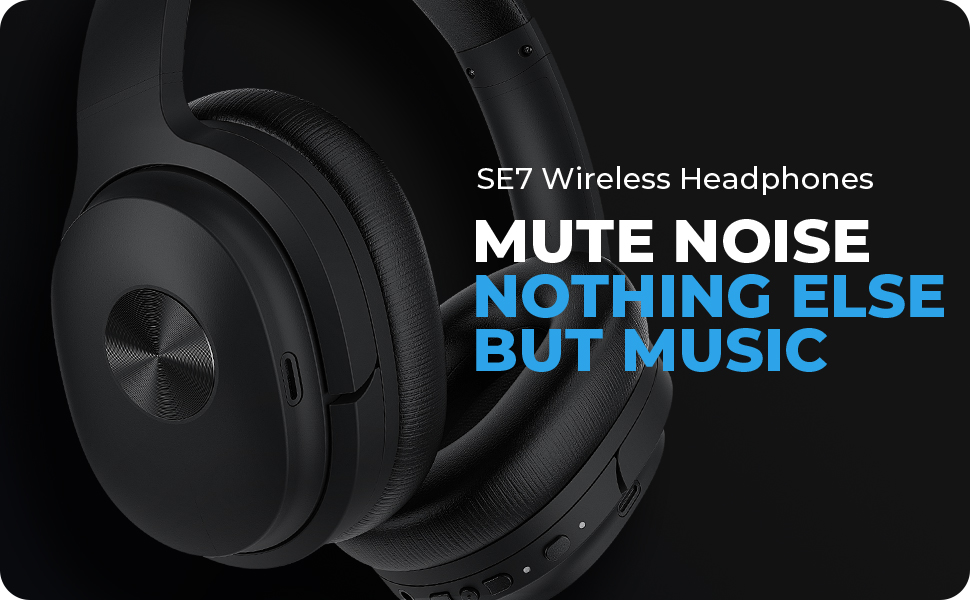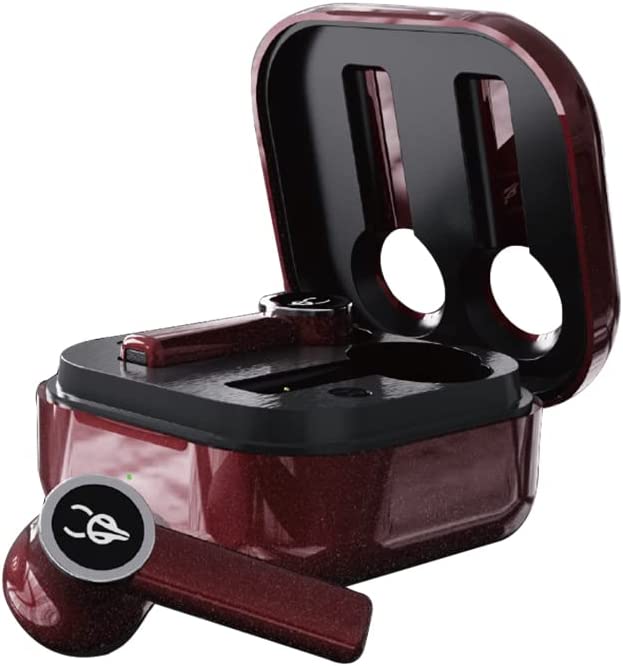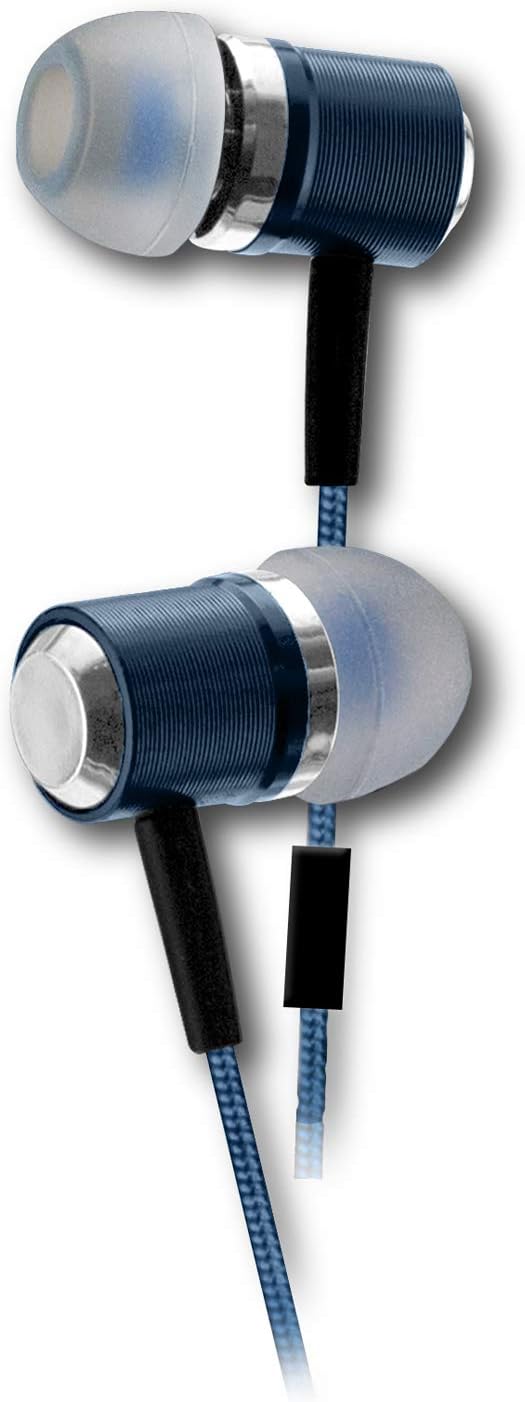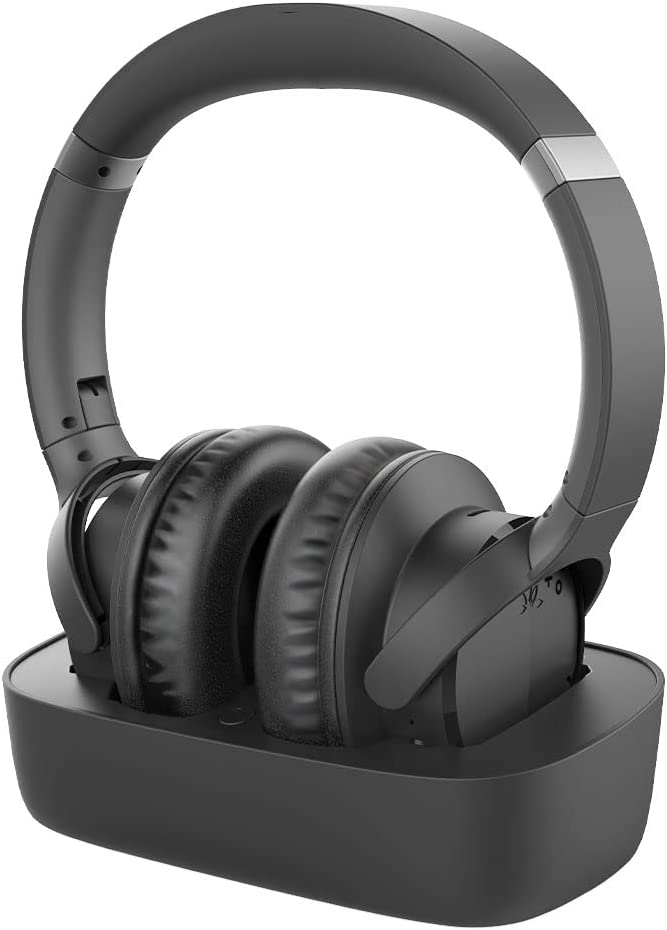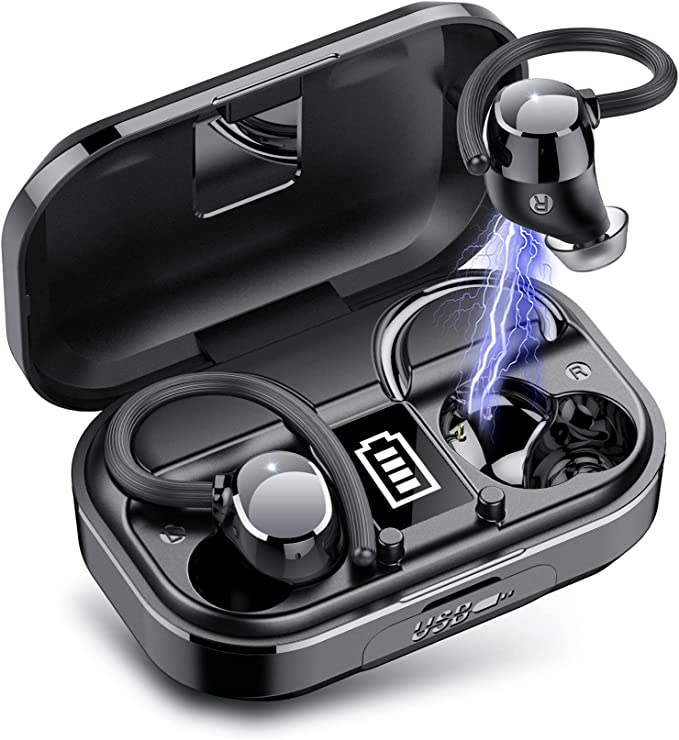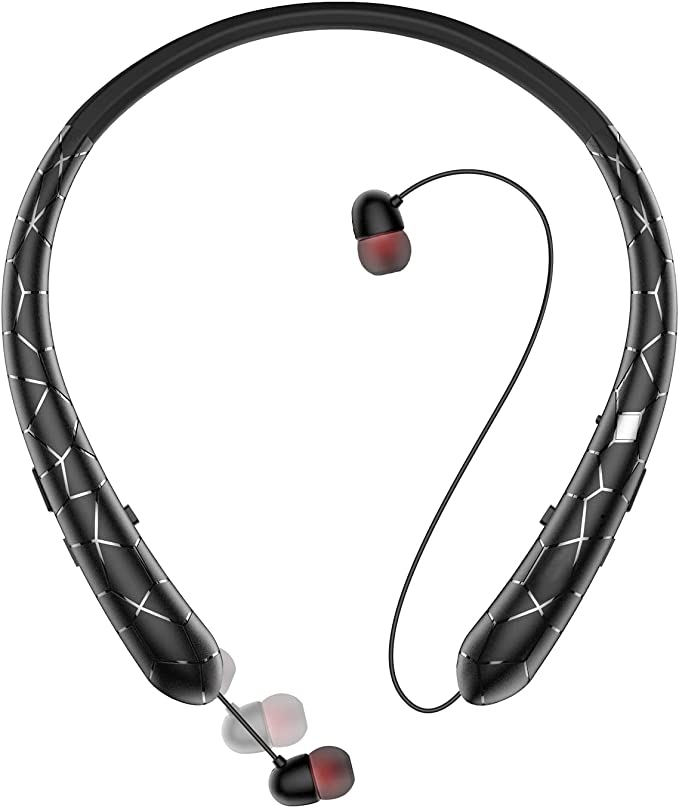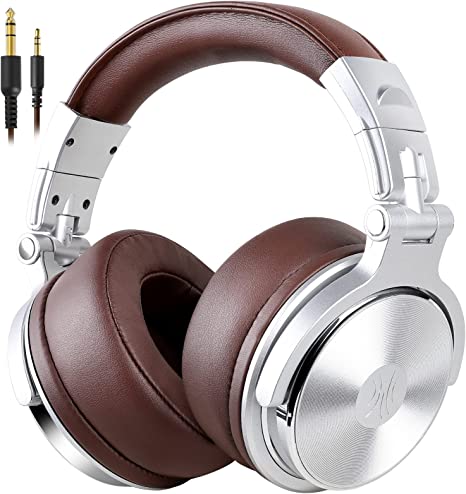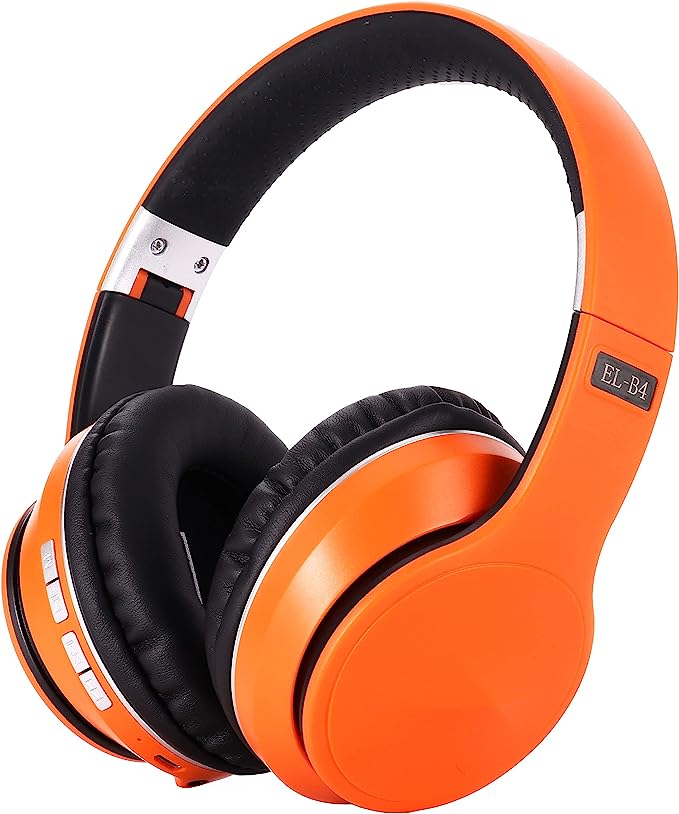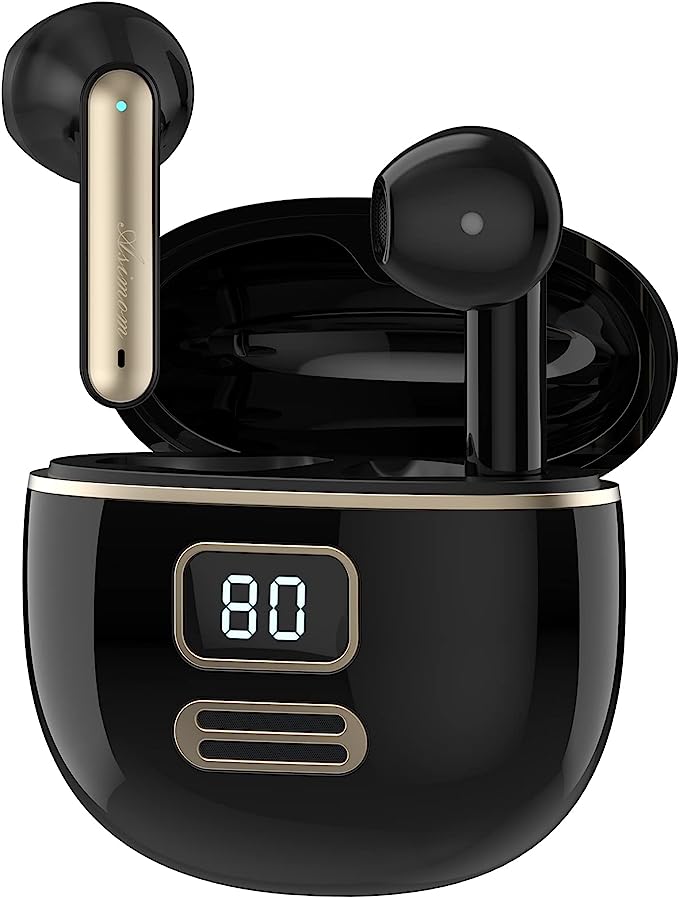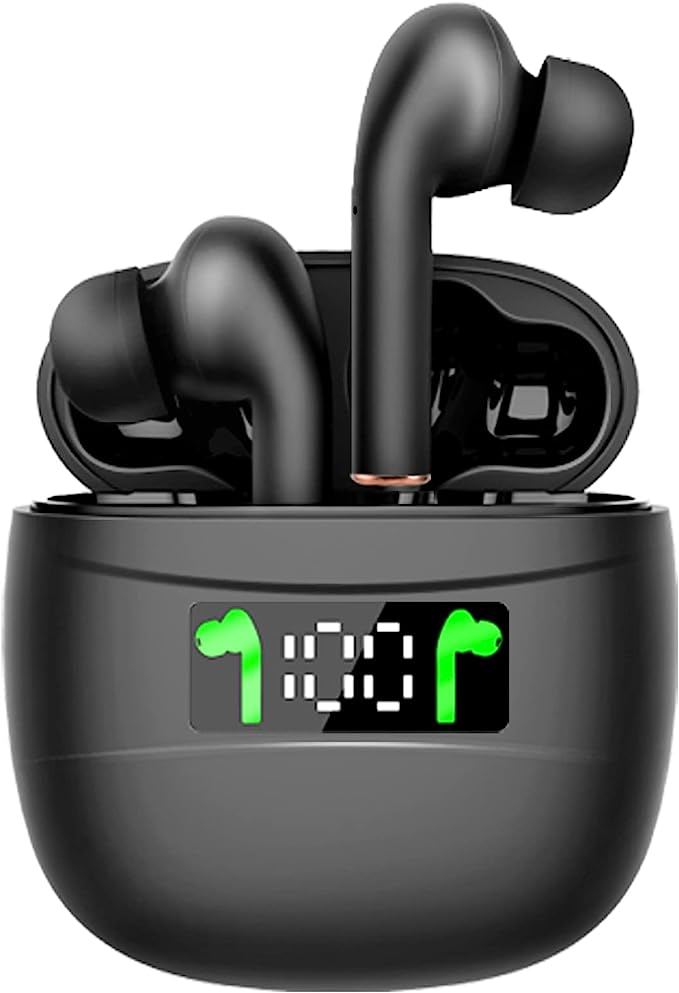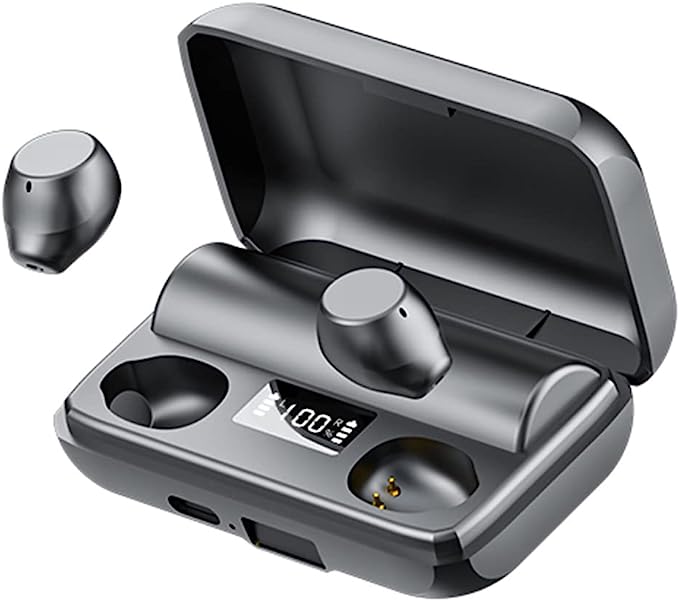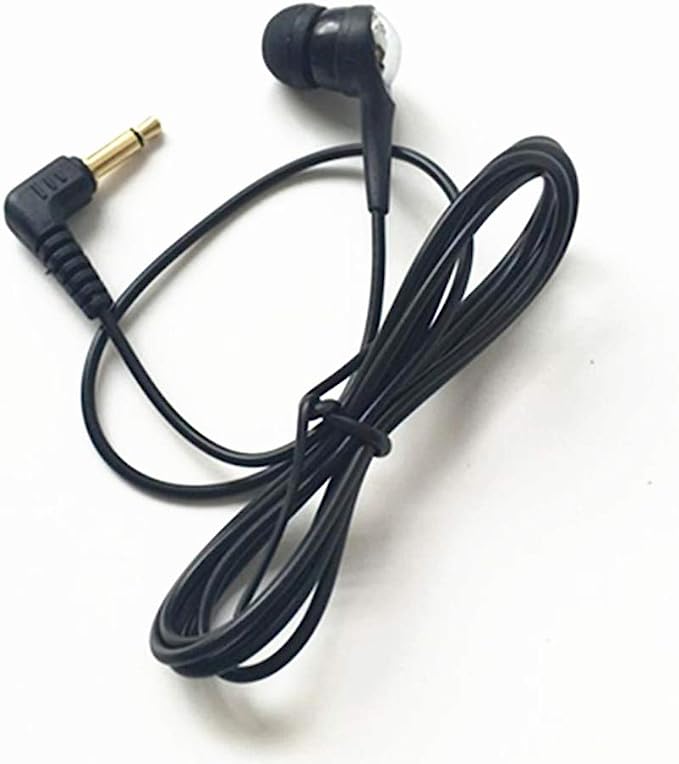ELECDER i45 On-Ear Headphones: The Science of Sound, Comfort, and Durability for Everyday Listening
Update on May 15, 2025, 9:12 a.m.
In our relentless march towards a wireless world, there’s a certain quiet dignity to a pair of headphones that still tethers itself to your device with a good old-fashioned cable. It’s more than just a plug; for many, it represents reliability, a straightforward connection that just works, without an app, a pairing ritual, or a battery percentage to anxiously monitor. Today, we’re not scaling the dizzying heights of audiophile esoterica or chasing stratospheric price tags. Instead, we’re going to do something I, as an audio engineer, find immensely fascinating: we’re dissecting a workhorse. Our subject is the ELECDER i45 On-Ear Headphones, a product designed for the everyday – for students, travelers, kids, and anyone needing a dependable audio companion.
My aim isn’t to sell you these headphones, but to peel back the layers and show you the often-overlooked science and thoughtful engineering that can, and indeed must, exist even in accessible audio gear. Let’s embark on a little journey together, exploring how everyday tech, like the ELECDER i45 with its microphone, foldable stereo bass design, and no-tangle 1.5M cord, can be brimming with clever choices and a surprising depth of consideration.

The Heartbeat of Your Music: Unpacking the Audio Transducer and that “Explosive” Bass
At the very core of any headphone, the part responsible for transforming an electrical signal into the sound waves that grace your ears, is the driver – or more formally, the transducer. The ELECDER i45, according to its specifications, houses 40mm audio drivers. Now, what does that “40mm” really signify, and how does it contribute to the promise of “Immersive Hi-Fi Stereo Bass”?
Imagine the driver as the vocal cords of the headphone. It’s typically a dynamic driver, which consists of a diaphragm (a thin, semi-rigid membrane), a voice coil attached to it, and a magnet system. When the electrical audio signal flows through the voice coil, it creates a fluctuating magnetic field that interacts with the permanent magnet, causing the coil and the attached diaphragm to vibrate rapidly. These vibrations push and pull the air, creating sound waves.
The “40mm” refers to the diameter of this diaphragm. In the physics of sound, the ability of a diaphragm to move air, especially at lower frequencies (which we perceive as bass), is often related to its surface area. A larger diaphragm, generally speaking, can displace more air per movement than a smaller one. Think of the difference in sound between a small handheld drum and a large bass drum; the latter, with its larger membrane, can produce much deeper, more resonant bass notes. So, a 40mm driver provides a respectable surface area, giving it the physical capability to produce a fuller sound, particularly in the lower registers, contributing to that “rich bass” mentioned in its description.
Now, what about “Hi-Fi Stereo Bass”? “Hi-Fi,” or High Fidelity, is a term that, in its purest sense, means the audio output is a very faithful reproduction of the original recording, with minimal distortion and an accurate representation of all frequencies. In the context of budget-friendly headphones like the ELECDER i45, while they might not compete with studio-grade reference monitors costing many times more, the “Hi-Fi” aspiration points towards an engineering goal: to deliver a sound that is clear, relatively uncolored, and engaging. It’s about capturing the essence of the music, ensuring those bass lines are present and defined without turning into an undefined muddy rumble, and that the midrange, where vocals and many instruments reside, remains “crisp” and intelligible. “Stereo” simply means it delivers two distinct channels of audio, one to each ear, which is fundamental for creating a sense of space and directionality in music and other audio content.
Interestingly, the product information for the ELECDER i45 mentions a rather evocative design inspiration: “when the designer was listening to powerful rock music, each powerful drum beat felt like an explosion point, so he thought why not imagine the speaker of the headphones as a bomb? When the music starts, with the change of rhythm, like the shape of sparks erupting in all directions.” This poetic snippet, while not a technical specification, gives us a clue into the desired sonic character. Engineers weren’t just aiming for flat, analytical sound; they were likely tuning these drivers to deliver an energetic, impactful listening experience, especially for genres like rock where a dynamic and punchy bass can make all the difference. That “explosion point” analogy suggests a focus on transient response – the ability of the headphone to react quickly to sudden changes in the music, like the sharp attack of a kick drum.

Engineering Resilience: The Science of a Headphone Built to Last (and Go Places)
Headphones, particularly those intended for daily use by active individuals, students, or for travel, need to be more than just good sounding; they need to be resilient. The ELECDER i45 addresses this through deliberate choices in materials and construction.
Let’s first consider the “rugged resilient plastic shell.” This might sound like a generic marketing term, but the choice of plastic (or more accurately, polymer) in headphone construction is a critical engineering decision. Materials like ABS (Acrylonitrile Butadiene Styrene) or Polycarbonate are often favored in consumer electronics. Why? They offer an excellent balance of properties: they are relatively lightweight (which is crucial for comfort, as we’ll discuss), possess good impact resistance (important for surviving accidental drops from a desk or tumbles in a backpack), can be molded into complex ergonomic shapes with precision, and are cost-effective to manufacture. The “resilient” part implies an ability to flex slightly under stress and return to its original shape, rather than cracking or shattering on first impact. It’s a quiet nod to the material science that helps your headphones survive the rigors of everyday life.
Then there’s the lifeline of any wired headphone: the cable. The ELECDER i45 boasts a “no-tangle 1.5M nylon woven rope.” This is a significant step up from the thin, rubbery PVC (Polyvinyl Chloride) cables that often plague more basic headphones – those notorious for kinking, fraying at the connection points, and, most frustratingly, tying themselves into a frustrating tangle the moment you look away. Nylon, a synthetic polymer known for its impressive tensile strength, durability, and abrasion resistance (think of its use in ropes, parachutes, and even tough apparel), provides a protective, woven sheath around the delicate internal conductors. This “woven rope” construction does two key things: firstly, it greatly enhances the cable’s physical strength, making it much harder to break through pulling or snagging. Secondly, the texture and slight stiffness imparted by the nylon braiding significantly reduce its tendency to tangle. It’s a simple, effective application of textile engineering principles that directly translates to a less frustrating user experience and a longer potential lifespan for the headphones. The 1.5-meter (approximately 4.9 feet) length is also a practical choice, offering enough slack for use with a phone in your pocket or a laptop on a desk, without being excessively long and cumbersome.

The Art of Fit and Fold: Ergonomics for the Real World
Sound quality and durability are vital, but if headphones aren’t comfortable, they’ll quickly be relegated to a desk drawer. The ELECDER i45 is described as an On-Ear headphone, meaning the earcups rest directly on the outer ear. This design choice itself has ergonomic implications, often offering a balance between the immersive feel of larger over-ear models and the portability of smaller designs.
The product information highlights “padded ultra-soft ear cushions and headband.” This is where ergonomics meets material science in pursuit of comfort. The padding, likely a type of foam (perhaps even a basic memory foam in some budget-friendly options), serves to distribute the clamping force of the headband evenly across the ears and the top of the head. The “ultra-soft” covering, often a synthetic protein leatherette or a soft fabric, is chosen for its pleasant tactile feel against the skin and its ability to withstand contact with skin oils and sweat over time. These cushions also play a secondary role in sound: they help create a seal against the ear, which can improve bass perception and provide a degree of passive noise isolation, subtly reducing the intrusion of ambient sounds from your surroundings.
Complementing the padding is the “adjustable size slider.” This seemingly simple mechanism is crucial. It allows the headband to extend or retract, ensuring that the earcups can be positioned correctly over the center of the user’s ears, regardless of head size. Proper alignment is essential not only for comfort but also for ensuring the audio drivers are delivering sound optimally to the ear canals.
The ELECDER i45’s specified weight of 9.9 ounces (approximately 0.28 Kilograms or 280 grams) is also a factor in its ergonomic profile. While not featherlight, it’s within a range generally considered comfortable for extended on-ear listening sessions. Lighter headphones reduce strain on the neck and minimize the feeling of pressure on the head.
And then there’s the “foldable design,” with an approximate folded size of 6 x 4.53 x 2.87 inches. This isn’t just a neat trick; it’s a piece of practical mechanical engineering. The hinges and swivels that allow the earcups to fold inwards (or flat, depending on the specific mechanism) significantly reduce the headphones’ footprint, making them much easier to stow in a bag or even a large pocket. For students, commuters, and travelers – key target users for the i45 – this “Space-Saving” aspect is a highly valued convenience, transforming the headphones from a potentially awkward item to carry into a more manageable accessory. The engineering challenge here lies in creating joints that are robust enough to withstand repeated folding and unfolding without becoming loose or breaking, all while keeping the manufacturing cost in check.

The Direct Connection: Wires, Microphones, and Control – A Nod to Reliable Simplicity
In an age increasingly dominated by Bluetooth and a myriad of wireless protocols, the ELECDER i45 proudly utilizes a wired connection via a 3.5MM Jack. There’s an enduring, almost nostalgic charm to the 3.5mm audio jack (also known as a phone jack or TRS/TRRS connector). For decades, it has been the de facto standard for personal audio, a beacon of universal compatibility. Its beauty lies in its simplicity and reliability: plug it in, and it just works. There are no pairing procedures to navigate, no batteries in the headphones themselves to charge, no concerns about wireless interference or audio latency (the slight delay that can occur with Bluetooth, sometimes noticeable when watching videos or gaming). For many applications, such as in schools where dozens of devices might be in use, or with in-flight entertainment systems, or even older beloved MP3 players, the 3.5mm jack remains king. The ELECDER i45’s claim of compatibility “with all 3.5mm jack devices, such as smartphones, laptops, desktops, Kindle, computers, PCs, MP3, MP4, etc.” underscores this universal appeal.
The headphones also feature an in-line microphone and a “Friendly Microphone Button.” The microphone, as per the product description, “is located on the nylon cable and is on the back of the function button.” This placement is a common and practical choice, aiming to position the mic relatively close to the mouth for clear voice pickup during calls or online interactions. The single button control system (“Easy to answer or end calls, Play/Pause audio, and skip tracks forward and backward via in-line control”) is a model of user-friendly design. It allows for essential playback and call management without needing to constantly reach for the source device. This is achieved through different click patterns (e.g., single click for play/pause/answer call, double click for next track, triple click for previous track), a simple electrical signaling method understood by most smartphones and computers. It’s a small touch, but one that greatly enhances usability on the go. It’s worth noting that these headphones, according to the Q&A, “do not have volume control buttons,” meaning volume adjustments are made directly on the connected device, a common simplification in more budget-oriented wired headsets.

Where Thoughtful Engineering Meets Everyday Scenarios
So, we’ve looked at the drivers, the materials, the ergonomics, and the connectivity. But how do these scientific and engineering choices coalesce into a product that serves its intended audience? The ELECDER i45 headphones are explicitly marketed for a wide range of users and scenarios: “for School/Kids/Teens/Smartphones/Travel/Tablet,” and designed for “school, online learning, training, home, office, Airport, Plane, Travel, and more.”
Consider the student or someone engaged in online learning. The wired connection ensures a stable, uninterrupted audio feed – crucial for lectures or collaborative work. The presence of a microphone is essential for participation. The durable build, from the resilient plastic to the nylon cable, is well-suited to the sometimes-less-than-gentle handling in a school bag or a shared learning environment. The on-ear design with soft padding offers a balance of comfort for potentially long study sessions and some passive isolation from household distractions.
For the traveler, the foldable design is a clear boon, making the headphones easy to pack. The reliability of the 3.5mm jack means no worries about pairing with an airplane’s in-flight entertainment system (many of which still rely on this venerable port) or the headphone battery dying mid-journey. The passive noise isolation, while not on par with active noise-canceling behemoths, can still help to dull the drone of an engine or the chatter of a busy terminal, making the journey more pleasant.
In a home or office setting, they offer a straightforward way to take calls, listen to webinars, or enjoy music privately without disturbing others. The longish 1.5m cable provides decent freedom of movement when tethered to a desktop or laptop.
Even for kids and teens (the product recommends them for ages over 8), the combination of a potentially engaging sound signature (remember that “explosive drum beat” inspiration?), robust construction, and the simplicity of a wired connection makes sense. There are no complex settings, just plug and play.

The Enduring Value of Considered Design
The ELECDER i45 On-Ear Headphones, when viewed through an engineering lens, are not about pushing the absolute boundaries of audio technology or luxury materials. Instead, they represent a series of considered compromises and intelligent applications of established scientific principles to create a product that is accessible, functional, and tailored to the needs of a broad audience.
From the fundamental physics of how its 40mm drivers generate sound, to the material science that underpins its durability and comfort, and the mechanical engineering that allows for its portability, there’s a quiet symphony of thoughtful decisions at play. The choice of a resilient plastic shell, a tough nylon-braided cable, soft earpads, an adjustable and foldable frame, and the ever-reliable 3.5mm wired connection with in-line controls – each element contributes to an overall user experience that aims to be free of frustration and rich in utility for its target price point.
So, the next time you pick up a seemingly simple pair of headphones like the ELECDER i45, or any everyday piece of technology for that matter, I encourage you to pause for a moment. Look beyond the surface, and you might just glimpse the fascinating interplay of science, engineering, and design that allows you to simply plug in, listen, and connect with your world. It’s a little piece of everyday magic, made possible by a lot of careful thought.

